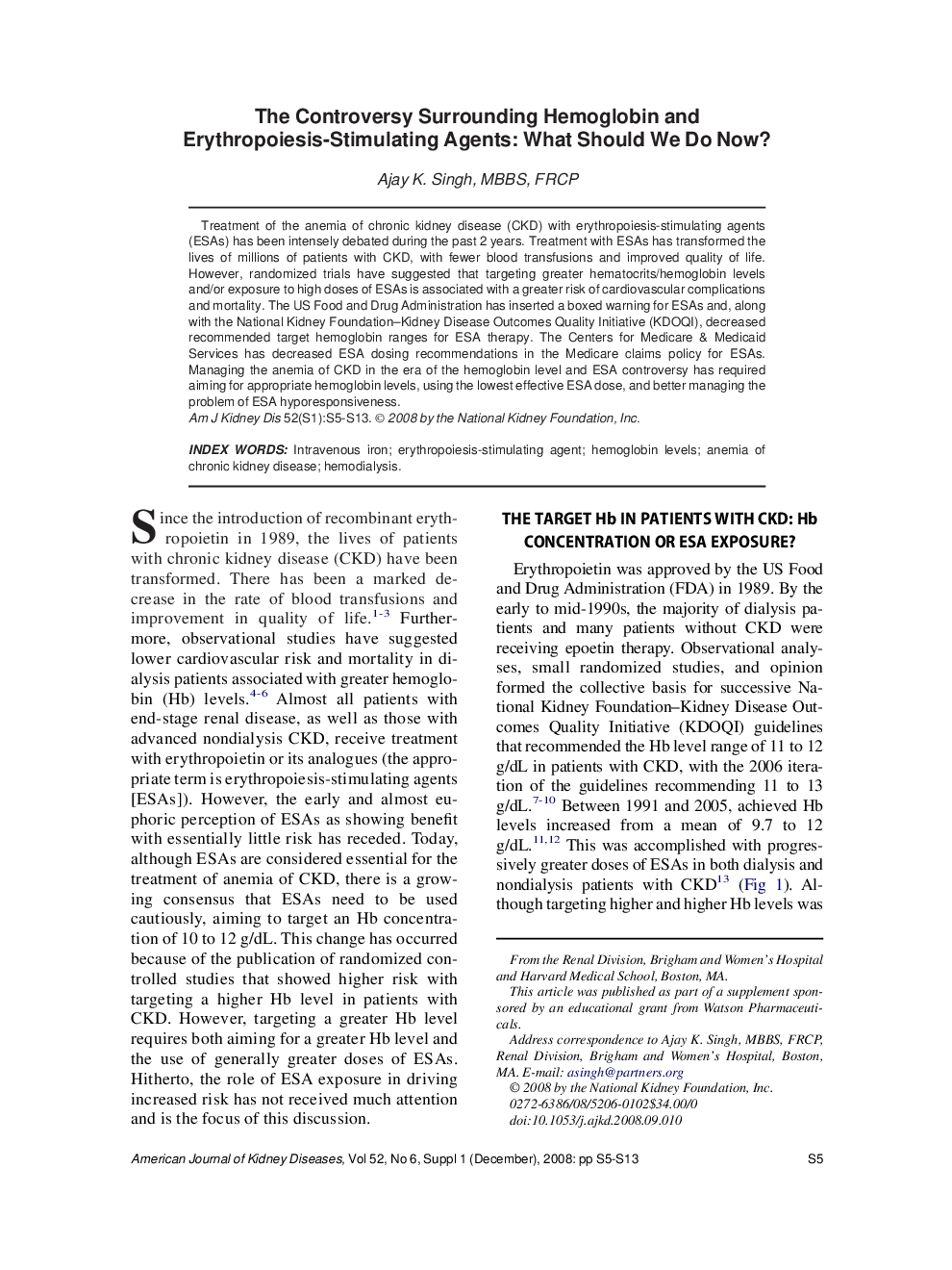| Article ID | Journal | Published Year | Pages | File Type |
|---|---|---|---|---|
| 3851624 | American Journal of Kidney Diseases | 2008 | 9 Pages |
Abstract
Treatment of the anemia of chronic kidney disease (CKD) with erythropoiesis-stimulating agents (ESAs) has been intensely debated during the past 2 years. Treatment with ESAs has transformed the lives of millions of patients with CKD, with fewer blood transfusions and improved quality of life. However, randomized trials have suggested that targeting greater hematocrits/hemoglobin levels and/or exposure to high doses of ESAs is associated with a greater risk of cardiovascular complications and mortality. The US Food and Drug Administration has inserted a boxed warning for ESAs and, along with the National Kidney Foundation-Kidney Disease Outcomes Quality Initiative (KDOQI), decreased recommended target hemoglobin ranges for ESA therapy. The Centers for Medicare & Medicaid Services has decreased ESA dosing recommendations in the Medicare claims policy for ESAs. Managing the anemia of CKD in the era of the hemoglobin level and ESA controversy has required aiming for appropriate hemoglobin levels, using the lowest effective ESA dose, and better managing the problem of ESA hyporesponsiveness.
Keywords
Related Topics
Health Sciences
Medicine and Dentistry
Nephrology
Authors
Ajay K. MBBS, FRCP,
